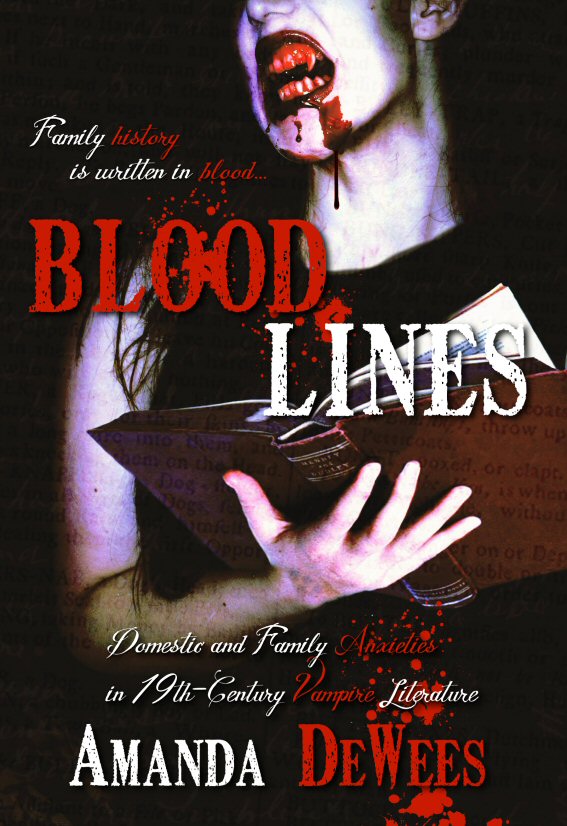On hold–but watch this space!
Nonfiction: Literary Criticism
 Before Bella, before Buffy, there was Byron. When Lord Byron and the English Romantic poets imported vampire lore from Germany and placed their own indelible stamp on it, they created a monster that still lives, two centuries later, in art and popular culture. But what kept the undead blood drinker haunting the imagination of writers throughout that century?
Before Bella, before Buffy, there was Byron. When Lord Byron and the English Romantic poets imported vampire lore from Germany and placed their own indelible stamp on it, they created a monster that still lives, two centuries later, in art and popular culture. But what kept the undead blood drinker haunting the imagination of writers throughout that century?
Blood Lines explores the ways 19th-century writers used the vampire story as a vehicle for messages about appropriate family and gender roles. In the Victorian era in particular, vampire stories and poems revealed the fear that civilization itself would crumble if its cornerstone, the family, became weakened. Greedy parents, selfish stepparents, rebellious daughters, rakish sons: all posed a threat to society, a threat made flesh—cold flesh—by vampire tales.
Many readers know that Stoker’s Dracula warns of the dangers of sexualized women, but uncontrolled sexuality could be just as damaging in men, as we see in H.B. Marriott Watson’s story “The Stone Chamber.” Sexy stepmothers could endanger their consort’s children, as revealed in Samuel Taylor Coleridge’s “Christabel” and J. Sheridan LeFanu’s famously titillating “Carmilla.” And sometimes the villainous vampire himself was small potatoes compared to the viciousness of humans, as revealed in the purple pages of the massive serial Varney, The Vampyre.
There were notable dissenters, however. John Keats’s Lamia and Théophile Gautier’s “La Morte amoureuse” present luscious female vampires as ideals of womanhood. And prominent women writers like Mary Elizabeth Braddon, Mary Wilkins Freeman, and Violet Hunt subvert the vampire tale to offer a strikingly different perspective from that of their male peers.
From the classic to the obscure, Blood Lines casts a thrilling light on a century of vampire literature. Sometimes frightening, sometimes amusing, but always compelling, these works reveal underlying human anxieties that endure into our own era—and never quite die.
Image credits: Photo by Aspasia Photography / Shari Nettles. Art direction and make-up: Trina Barker. Model: Kat Kennedy.

Recent Comments